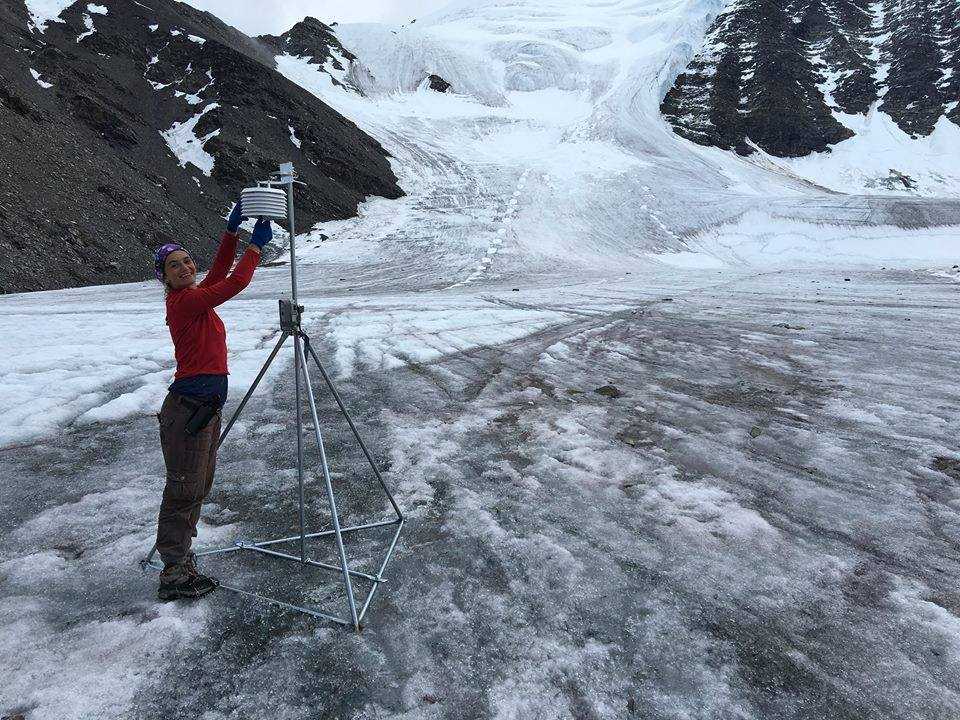Arctic sea ice is rapidly diminishing due to global warming, and scientists have found that sea ice dynamics have a big impact on circulation and precipitation patterns in Arctic Alaska, which lies at a climatological crossroads between the Arctic and North Pacific oceans. Recent studies—most of which focus on current trends in the region and on what will happen in the future—have shown that circulation patterns in the Arctic and North Pacific oceans influence one another.
Northern Arizona University doctoral candidate Ellie Broadman of Northern Arizona University’s School of Earth and Sustainability wanted to learn about this relationship on a longer timescale, so she developed and led a study in Arctic Alaska to investigate it. She is the lead author on a paper detailing her team’s findings, “Coupled impacts of sea ice variability and North Pacific atmospheric circulation on Holocene hydroclimate in Arctic Alaska,” which was recently published in the prestigious journal Proceedings of the National Academy of Sciences.
The team, which included NAU Regents’ Professor and prominent paleoclimatologist Darrell Kaufman and four noted British scientists as collaborators, compiled a new record of hydroclimatic change in the past 10,000 years in Arctic Alaska, revealing that periods of reduced sea ice result in isotopically heavier precipitation derived from proximal Arctic moisture sources. The researchers supported their findings about this systematic relationship through isotope-enabled model simulations and a compilation of regional paleoclimate records.
“We developed a new paleoclimate dataset from a lake sediment core that was collected in Arctic Alaska,” Broadman said. “That record extends back nearly 10,000 years, and we used it to understand precipitation patterns in the past. We combined that dataset with some model simulations and a bunch of previously published paleoclimate records and interpreted all those different puzzle pieces to try to get a sense of what was happening at a large scale.”
“Using all these datasets, we showed that there’s evidence for a relationship between sea ice in the Arctic and atmospheric circulation in the North Pacific in the past, and that those dynamics can make it wetter or drier in Arctic Alaska. Understanding these long-term dynamics are important for understanding what will happen in the future, because they give us an idea of how different parts of the climate system have responded to one another previously. They reveal some natural processes that are important to understand as we look at the impact of global warming.”
Broadman was drawn to paleoclimate research while pursuing her undergraduate degree in geography, which she enjoyed because of its interdisciplinary nature.
“I loved thinking about the connections between natural and human systems. I started working in the paleoecology lab to get some research experience and got hooked. You can do so many things with mud! You can study the influence of humans on the environment, or how fire and vegetation changed over time, or look at really large-scale climate processes, like I did in this paper. And just like geography, paleoclimatology is so interdisciplinary; it draws people from all kinds of academic backgrounds, from anthropology, to ecology, to math and physics and beyond. I love working with people who have all these different backgrounds and interests. I also love learning about the Earth’s climate system, and I wanted to become an expert in climate science. So, when I decided to go to graduate school, it was an easy decision to work in this interdisciplinary, climate-focused field.”
Broadman chose NAU’s PhD program in Earth Sciences and Environmental Sustainability for her graduate career. “The main reason I came to NAU was to work with Darrell Kaufman, my adviser. He has an incredible reputation; he does super interesting and important research and it was a major selling point that his research program is focused on Alaska. As someone interested in climate change, I was drawn to the Arctic. It feels exciting and extremely relevant to study a region where climate is changing faster than anywhere else on the planet. Getting to do field work in Alaska, and specifically in the Arctic National Wildlife Refuge, was a bonus.”
“As I set out to earn my Ph.D., my goal was to contribute about the North Pacific, the Arctic, sea ice and how those processes work together to influence climate in Arctic Alaska. It’s very satisfying to feel like I accomplished that goal, and I think it feeds the part of my brain that loves to think in terms of big, interconnected systems.”
Broadman, who plans to graduate in April, is applying for a variety of positions. Her interests include policy, land management and science communications as well as teaching and research.
Kerry Bennett | Office of the Vice President for Research




